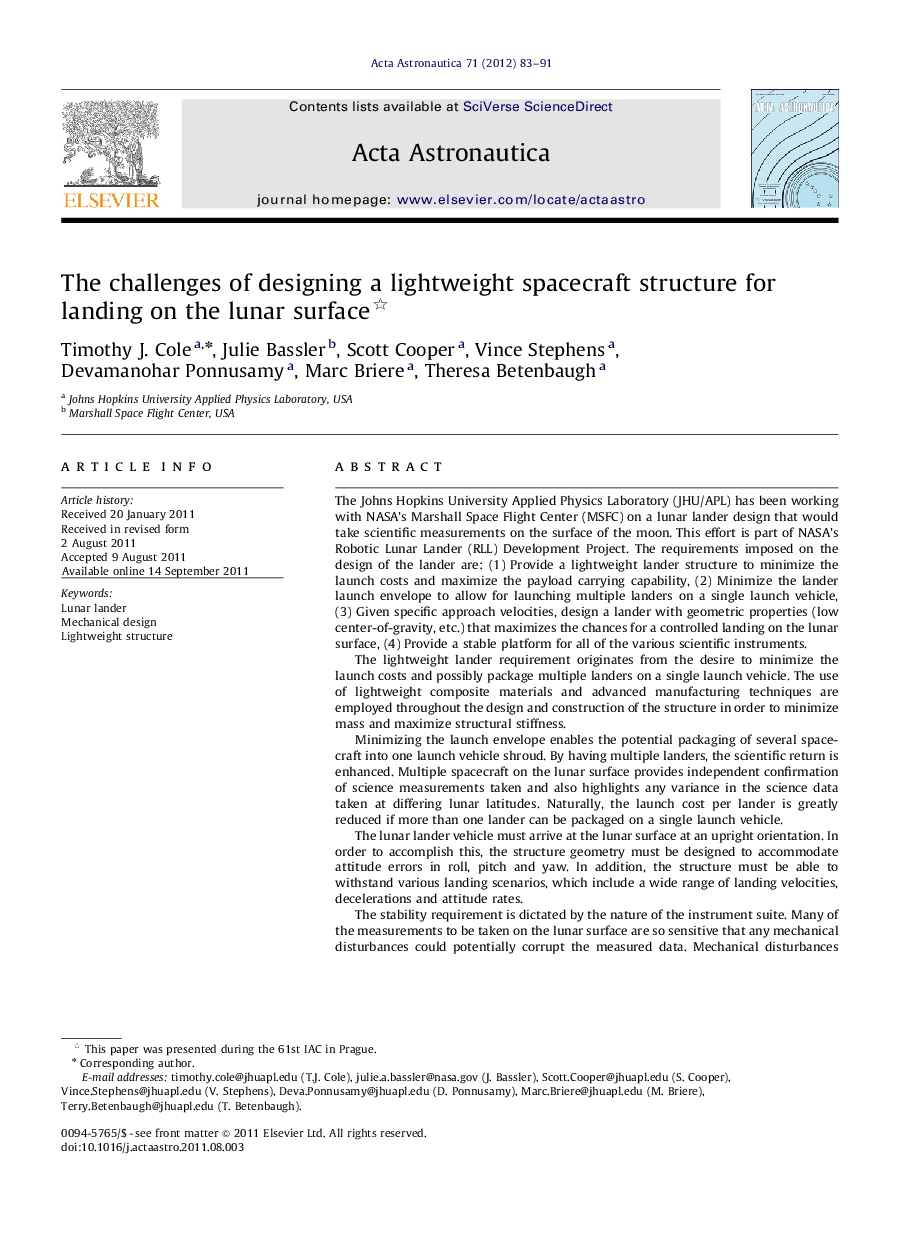| کد مقاله | کد نشریه | سال انتشار | مقاله انگلیسی | نسخه تمام متن |
|---|---|---|---|---|
| 1715484 | 1519977 | 2012 | 9 صفحه PDF | دانلود رایگان |

The Johns Hopkins University Applied Physics Laboratory (JHU/APL) has been working with NASA's Marshall Space Flight Center (MSFC) on a lunar lander design that would take scientific measurements on the surface of the moon. This effort is part of NASA's Robotic Lunar Lander (RLL) Development Project. The requirements imposed on the design of the lander are: (1) Provide a lightweight lander structure to minimize the launch costs and maximize the payload carrying capability, (2) Minimize the lander launch envelope to allow for launching multiple landers on a single launch vehicle, (3) Given specific approach velocities, design a lander with geometric properties (low center-of-gravity, etc.) that maximizes the chances for a controlled landing on the lunar surface, (4) Provide a stable platform for all of the various scientific instruments.The lightweight lander requirement originates from the desire to minimize the launch costs and possibly package multiple landers on a single launch vehicle. The use of lightweight composite materials and advanced manufacturing techniques are employed throughout the design and construction of the structure in order to minimize mass and maximize structural stiffness.Minimizing the launch envelope enables the potential packaging of several spacecraft into one launch vehicle shroud. By having multiple landers, the scientific return is enhanced. Multiple spacecraft on the lunar surface provides independent confirmation of science measurements taken and also highlights any variance in the science data taken at differing lunar latitudes. Naturally, the launch cost per lander is greatly reduced if more than one lander can be packaged on a single launch vehicle.The lunar lander vehicle must arrive at the lunar surface at an upright orientation. In order to accomplish this, the structure geometry must be designed to accommodate attitude errors in roll, pitch and yaw. In addition, the structure must be able to withstand various landing scenarios, which include a wide range of landing velocities, decelerations and attitude rates.The stability requirement is dictated by the nature of the instrument suite. Many of the measurements to be taken on the lunar surface are so sensitive that any mechanical disturbances could potentially corrupt the measured data. Mechanical disturbances such as operating mechanisms, thermal expansion/contraction, deployable booms or other devices must be minimized.It is imperative that all of the structural requirements are met for this mission. Failure to meet any of the numerous challenging requirements could cause the loss of all the scientific objectives.
► Robotic Lander Design—Concept for autonomous lunar lander capable of multiple deployments.
► Lander Structure Design—Minimize mass through use of composite materials.
► Lander Leg Design—Optimized design absorbs energy while maintaining stability.
► Stability Studies—Describes parameters to consider when designing a stable robotic lander.
Journal: Acta Astronautica - Volume 71, February–March 2012, Pages 83–91